Vanilla beans, paste, powder, and more are available to us home bakers. And vanilla comes from different sources, giving them unique flavors. Keep reading to learn more about the different types of vanilla!
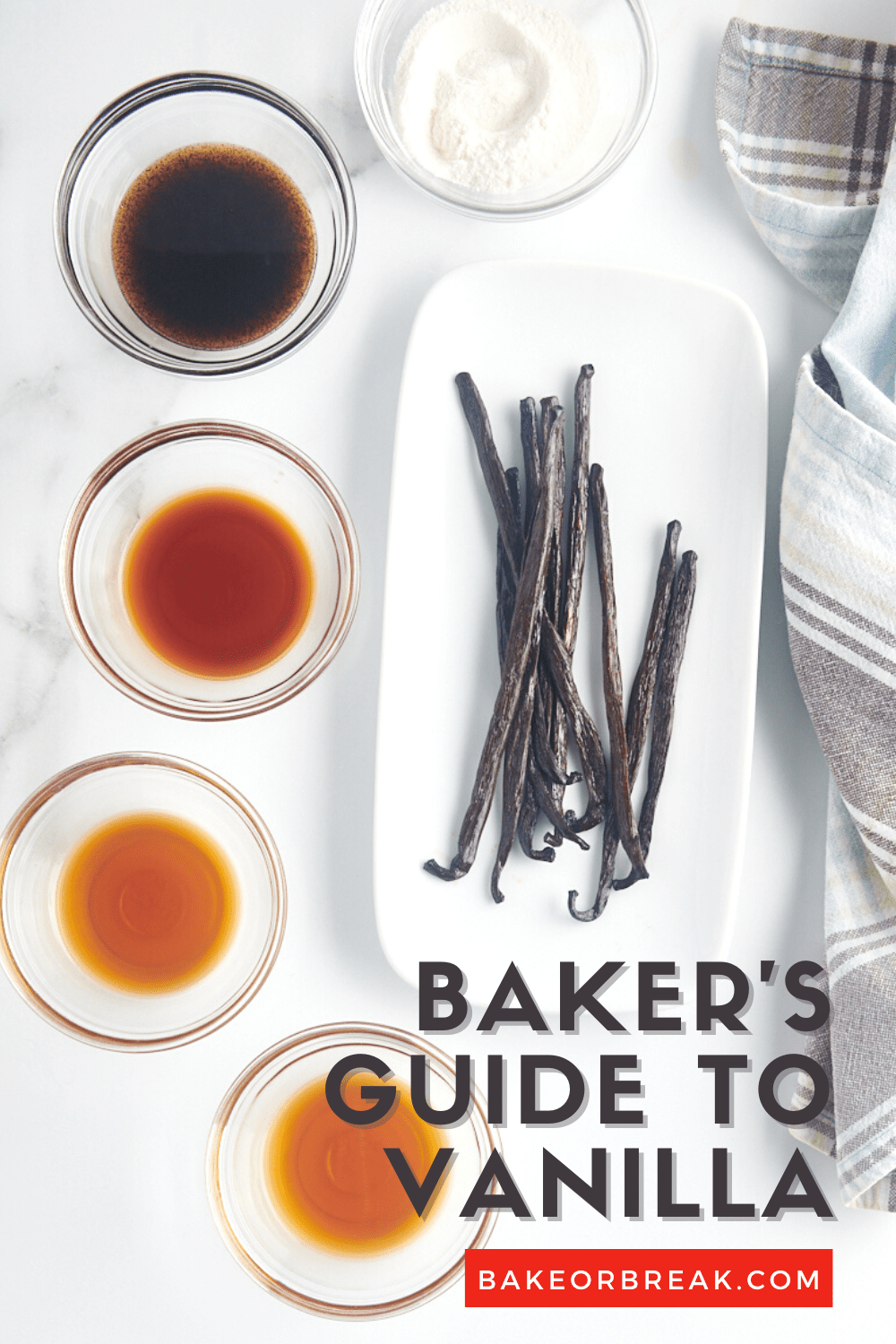
Different Types of Vanilla
Vanilla is one of the most commonly used ingredients and flavors in baking. Its flavor is complementary to so many other flavors, from chocolate to citrus. And it’s pretty darn good when it’s the primary flavor focus, too.
While you probably add vanilla extract to just about everything you bake, vanilla isn’t just for extracts. With beans, paste, sugar, and more available, you can use the perfect vanilla in your baking to create delicious and beautiful baked goods.
Now let’s delve into the different types of vanilla available to home bakers.
Different Sources of Vanilla
Before we get to the different vanilla products, let’s take a closer look at some of the sources of vanilla. You’ll see that they not only come from different regions, but their flavors are also distinct. They all behave similarly in baking, so taste is the primary factor in choosing a variety.
There are many, many types of vanilla grown in various regions. Let’s focus on some of the more common varieties available, specifically Madagascar, Mexican, and Tahitian.
All vanilla begins as vanilla beans, which are long pods with seeds inside. The beans are cultivated from an orchid that is either pollinated by bees or hand-pollinated by humans. Each type of vanilla is named for the region in which it’s grown. Because of the different environmental conditions and methods of growing the orchids, each type of vanilla has a unique flavor profile.

Madagascar Bourbon Vanilla
Think of Madagascar vanilla as an all-purpose vanilla. It has a rich, creamy flavor that works well in most baked goods. When you conjure the smell and taste of vanilla, this is likely the flavor you imagine. It’s also the most commonly available vanilla, accounting for about two-thirds of the vanilla produced commercially.
In the case of this vanilla, Bourbon refers to the region it’s grown, not the liquor. Madagascar, Comoros, and Réunion (formerly called Bourbon) make up a group of islands in the Indian Ocean where Madagascar vanilla beans are grown.
Mexican Vanilla
Vanilla originated many, many years ago in the area that’s now Mexico. In fact, the vanilla orchids of that area (Vanilla planifolia) were taken to Madagascar to begin their production there.
Mexican vanilla beans have a bold flavor with creamy, spicy undertones. They can also be described as strong and smokey, with hints of spice like cinnamon. They’re a good choice in recipes where vanilla is the primary flavor, but you can use it in most any recipe where you’d use Madagascar vanilla.
Tahitian Vanilla
Tahitian vanilla beans have a floral, fruity flavor and aroma. They have less vanillin, which is the primary compound in vanilla that is responsible for vanilla’s distinct flavor and aroma. The vanilla here is more in the smell than the flavor. Keep in mind that this vanilla doesn’t always hold up well to heat, so it’s perhaps a better choice for cold and frozen treats.
These beans come from a different type of orchid (Vanilla tahitensis) than Mexican and Madagascar vanilla beans. They are grown and produced in Tahiti but also in other areas like Papua New Guinea.
Other Types of Vanilla
There are many, many regions that produce vanilla. The types above are the ones you’re most likely to find readily available. In addition, let’s briefly look at a few other varieties.
- Indonesian Vanilla – The flavor of Indonesian vanilla leans more toward woody and smokey with fruit and fig flavors. Sometimes, it is described as having a chocolate-like flavor. Unlike many vanillas, it tends to maintain its full flavor through the baking process.
- Ugandan Vanilla – These vanilla beans have quite a lot of vanillin, making a bold flavor and aroma that’s well-suited for rich desserts. Ugandan vanilla beans also have an aroma that’s much like milk chocolate, raisins, and figs.
- Indian Vanilla – This type of vanilla has a full flavor with chocolate undertones.
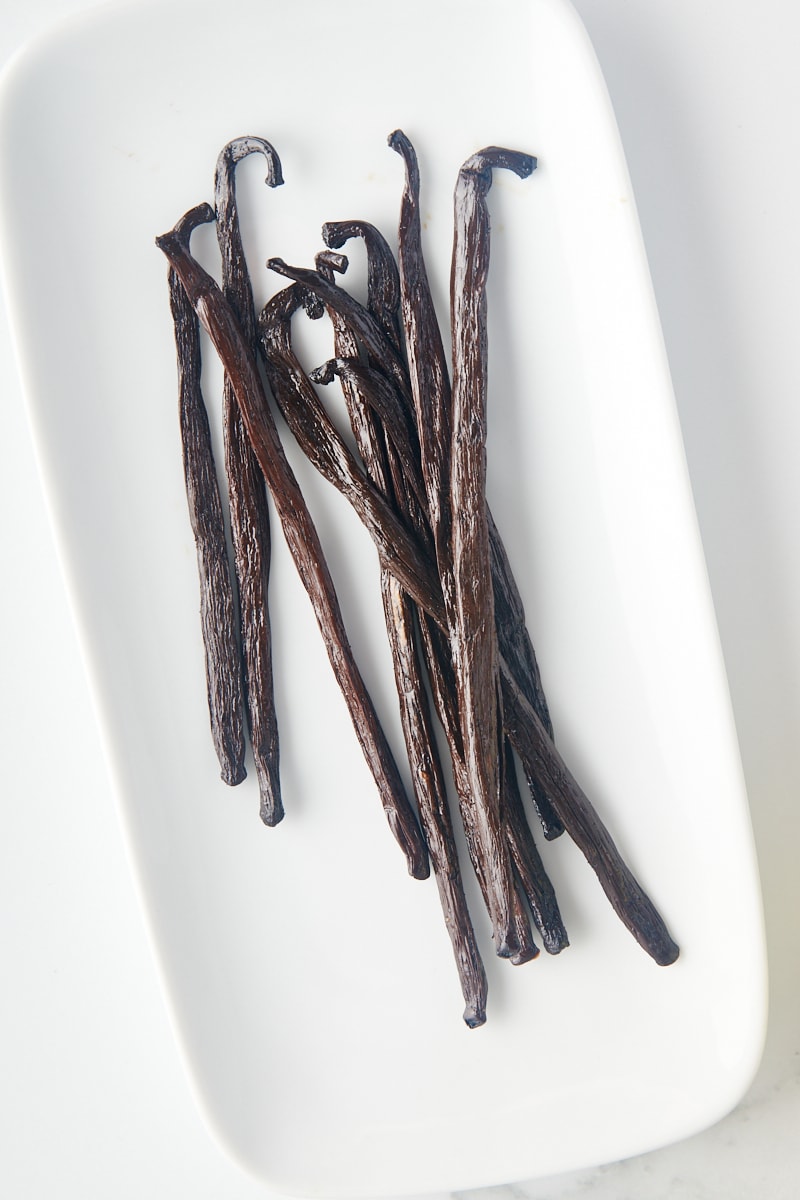
Vanilla Beans
If you’re looking for vanilla in its simplest form, that’s vanilla beans. The seeds of vanilla beans can be added to most baking recipes.
To use a vanilla bean, cut the end of the bean. Then, slice through the middle of the bean lengthwise. The tiny seeds can be removed by scraping with the tip of a knife.
The scraped seeds are used for flavor in baked goods. However, the appearance is often a factor as well, as the little seeds give a speckled effect.
What are the grades of vanilla?
Vanilla beans are available in grades. Grade A beans are used for baking and cooking. Grade B beans, also called extract grade, have a lower moisture content and are better suited for (you guessed it!) making vanilla extract.
The grade is not indicative of quality. The two kinds just have different uses.
While vanilla beans add wonderful flavor to baking, their higher price is often prohibitive to use routinely. Extract and other vanilla products are more affordable alternatives.
How can I substitute vanilla extract for vanilla beans?
One average vanilla bean is equivalent to 1 tablespoon of vanilla extract or vanilla bean paste.
Vanilla Extract
Vanilla extract is made by soaking vanilla beans in alcohol to create a liquid that can be used in most all types of baking. Extract is widely available and more affordable than individual vanilla beans. You can also easily make homemade vanilla extract.
Pure vanilla extract is regulated by the FDA so that it contains a minimum amount of vanilla beans. To be labeled as pure vanilla extract in the US, the extract must contain 35% alcohol and 13.35 ounces of vanilla per gallon.
What is in vanilla extract?
A good quality vanilla extract will only contain vanilla beans, alcohol, and water. To enhance the flavor of lower quality vanilla beans, some brands will also add sugar.
Extracts made with vanilla beans from a specific region will have that information on the label. Vanilla extracts that don’t specify the region are likely a blend of different sources.
Imitation vanilla, clear vanilla, and vanilla flavoring
Imitation vanilla extract is a synthetic product and is not made from vanilla beans. Instead, it’s made from a synthetic form of vanillin, the primary compound that gives vanilla its flavor and aroma. There are a lot of ways that a lab can make vanillin using different sources. I won’t go into that here, but a quick internet search will likely have you ditching the artificial vanilla for the real stuff.
Clear vanilla extract is an imitation vanilla extract. While it may not be your first choice flavor-wise, its lack of color can be advantageous when you don’t want to add color to something like a frosting.
Because real vanilla contains many more flavor compounds than just vanillin, these artificial vanillas generally lack the depth of flavor that vanilla provides. However, their flavors usually persist well after baking, although it can leave a bitter aftertaste.
While imitation vanilla is less expensive than pure vanilla, keep in mind when substituting that you may need to use more imitation vanilla to achieve a similar end result.
Vanilla flavoring is a combination of pure and imitation vanilla extract. It has a much lower alcohol content than vanilla extract, perhaps even containing no alcohol at all. That means that it’s usually less expensive than pure vanilla extract but more costly than imitation vanilla.

Vanilla Bean Paste
Vanilla bean paste is a thick paste made with scraped vanilla seeds, vanilla extract, and usually some type of thickener. The flavor is also more concentrated than vanilla extract.
The paste can be used in the same way as extract, but it creates the speckled appearance usually seen with vanilla beans. It is often considered a good balance between the price of vanilla beans and the convenience of extract. See it in action in No-Bake Black Bottom Vanilla Bean Cheesecake!
How can I substitute vanilla bean paste for extract?
Usually, vanilla bean paste can be used in place of the same quantity of vanilla extract in a recipe. Different brands vary, however, so check the label for substitution information when replacing extract with paste in a recipe.
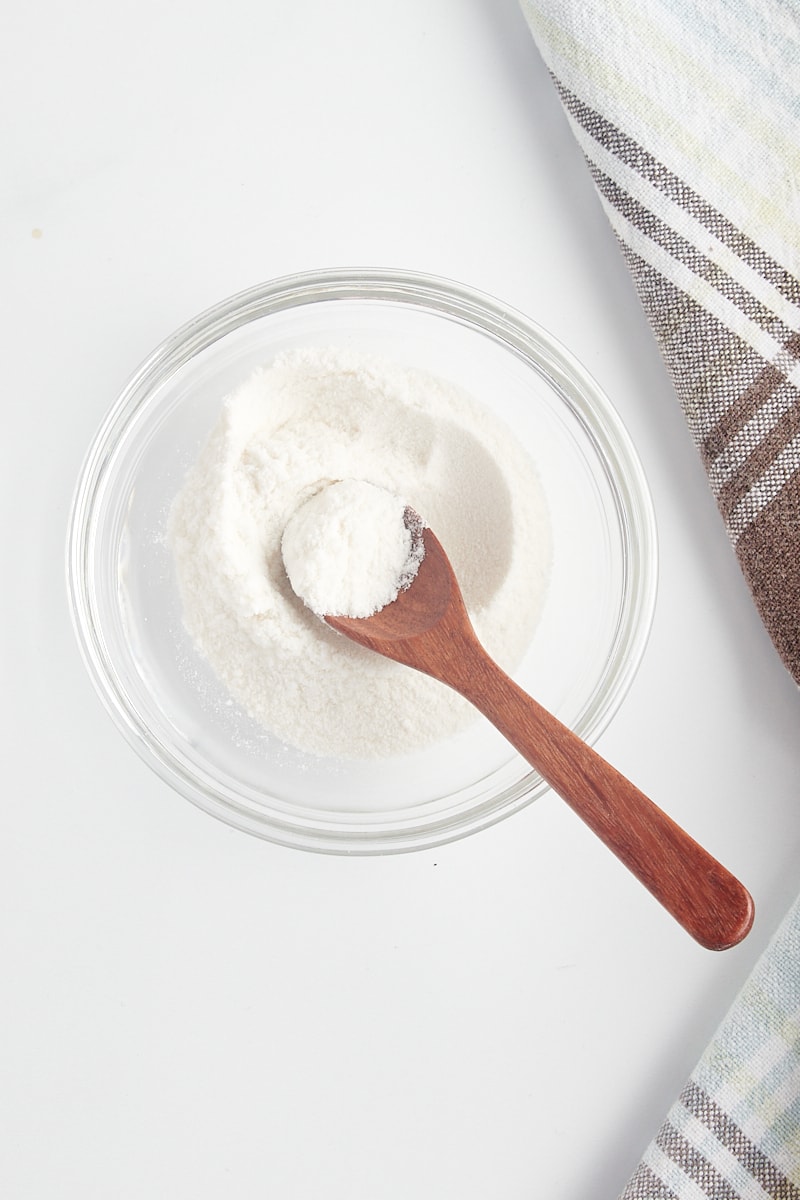
Vanilla Powder
Vanilla powder is made from dried, ground vanilla beans. The powder is much lighter in color than extract. However, the darker the powder, the more pure vanilla it contains. Some versions are closer to white, meaning that they contain sugar or some other ingredient.
How is vanilla powder used?
Vanilla powder can be used interchangeably with vanilla extract in many recipes. Check the labeling for substitution information.
The powder version of vanilla is often used in recipes such as frostings where the color that extract adds is not desirable, like a white frosting. The powder also has the advantage of not evaporating like extract does when added to hot liquids. It can also be advantageous to use in some recipes where adding extra liquid could be problematic.
Vanilla Sugar
Vanilla sugar is a combination of vanilla beans or extract along with granulated or confectioners’ sugar. It can be used to replace some or all of the sugar and vanilla in a recipe or to add flavor to cereal or coffee.
It is commercially available or can be easily made by placing a whole, split vanilla bean or an already scraped vanilla bean in a jar or other container of 2 cups of sugar. After about two weeks, the vanilla sugar will be ready to use. Put it to use in these Vanilla Bean Cheesecake Bars!
Vanilla Salt
Vanilla salt is simply a combination of vanilla beans and salt. It is often used as a finishing salt by sprinkling the vanilla salt over baked goods such as brownies and cookies.
As with vanilla sugar, the salt is commercially available or can be made at home. Combine a cup of sea salt with the seeds of 2 to 3 vanilla beans. Alternatively, use 1 or 2 scraped vanilla beans in the salt. The salt will be ready to use in about two weeks.

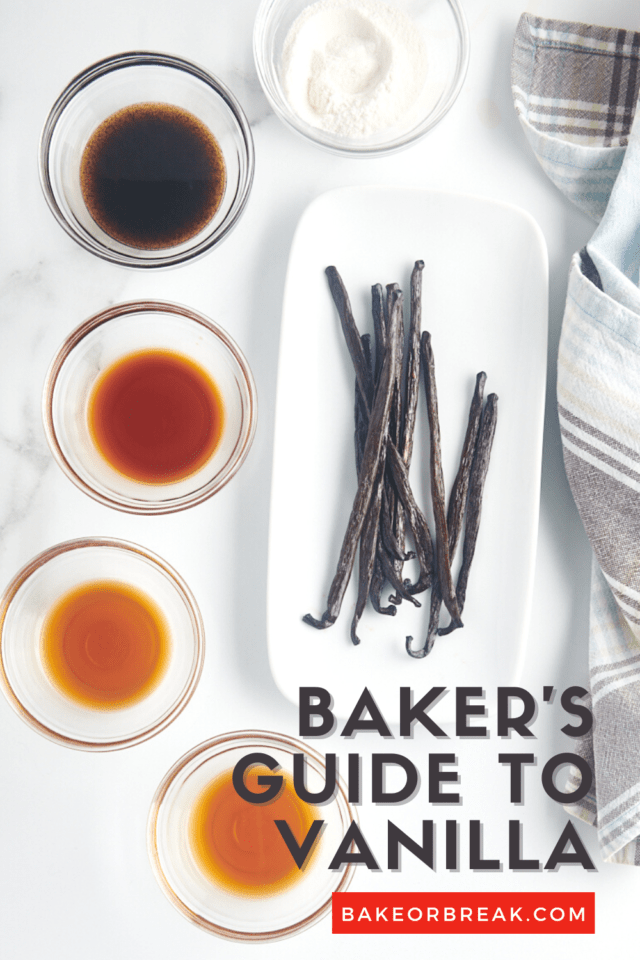



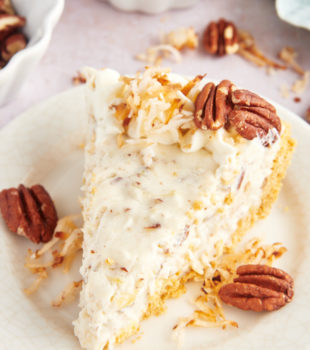

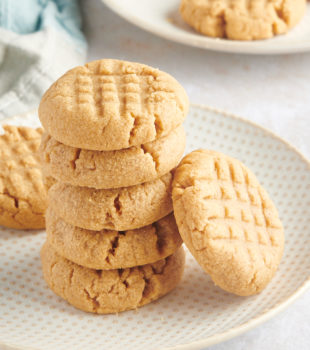


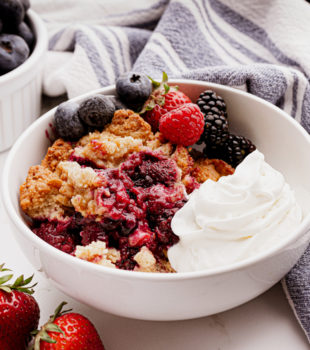
3 Comments on “Types of Vanilla: A Home Baker’s Guide”
Jennifer, as always your blog posts are so informative! I just purchased some vanilla powder, and now I will be able to use it! Many thanks for keeping us home bakers in the loop! -Best Maria Lape
Thank you so much, Maria! I’m sure you’ll make something delicious with your new vanilla powder. Happy baking!
wow yeah new year new for new content and ingredients